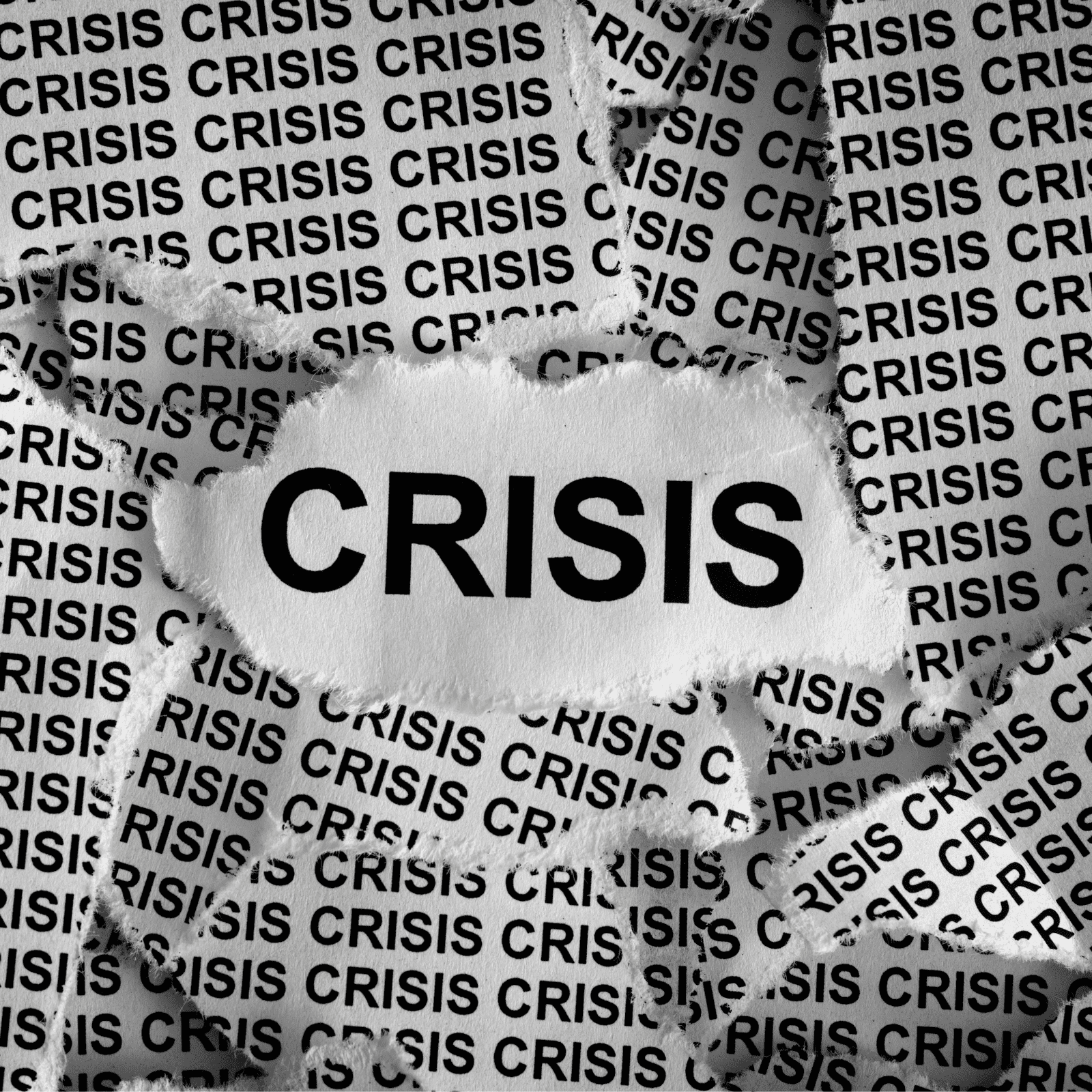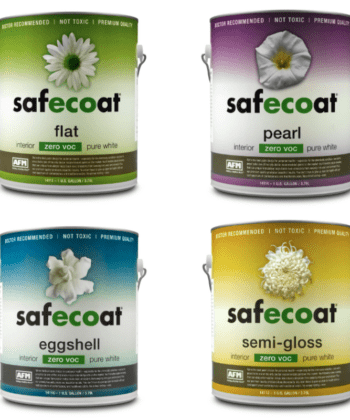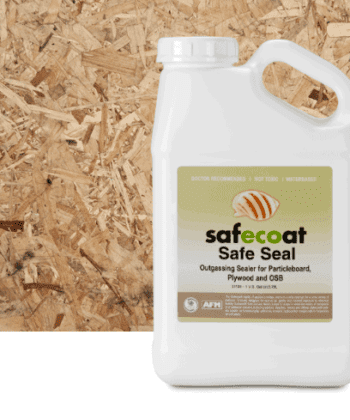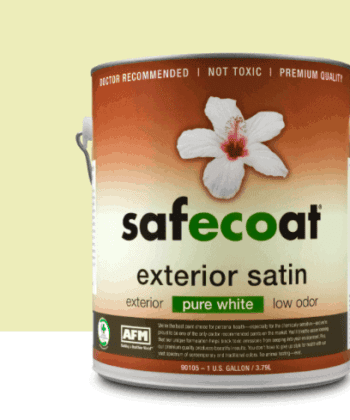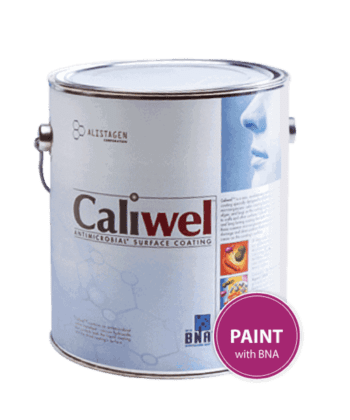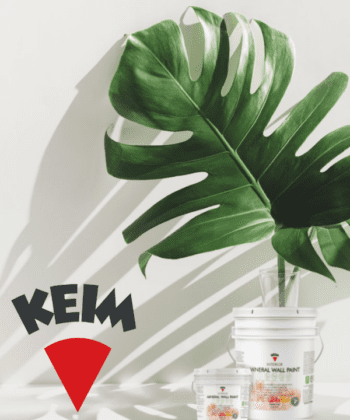Podcast
NTE Podcast: Crisis Averted!
NTE Podcast: Crisis Averted!
Jay and I take calls all the time from nervous homeowners as well as interested commercial clients who are desperately trying to fix a problem on a job site or a similar situation. When this crisis occurs, we end up being part detective and part counselor. Find the problem, fix it, then calm the situation so the project can move forward. Here are a few of our stories…
iTunes
Spotify
Transcript
Crisis Averted!
Andy Pace:
A common phone call we get, “Help. My house is full of mold. What do we do?” or, “Formaldehyde is everywhere. How do we take care of this?” Today on Non Toxic Environments, Jay and I are going to talk about crisis averted. Over the years, we’ve had several projects where we’ve been brought in to help avert a crisis occurring on the job. Whether it’s mold or formaldehyde or other chemical issues, Jay and I have plenty of stories to talk about here on Non Toxic Environments, and we hope you enjoy the show.
Hello, folks. Welcome back to Non Toxic Environments. This week, I am here again with Jay Watts. Jay, we’ve got a pretty interesting topic today.
Jay Watts:
We were talking about it earlier in the week. And as long as we’ve been in the business, there’s been situations where disaster is pending. A project started to slip and go sideways down the hill. And fortunately, we found out about those and were able to kind of come in and kind of save the project from completely going crazy.
Andy:
Complete and utter disaster. Yeah. So the one that came to mind for me, which was pretty good, was many years ago, folks, Bavarian Motor Works, BMW, had retained a subcontractor to supply, in the one of the sedans… I forget. Andy, you’ll have to remind me which model it was. In the back in the back trunk, what they do on the floor there, is they put a piece of CNC, computer-cut plywood, as the floor of the trunk. And then they put the carpeting over that. Well, what they were concerned about was the formaldehyde that might have been coming off the plywood. And the vendor that supplied these trunk floors, they had invested a ton of money in inventory. I don’t know. Andy, tell me if I’m wrong. Did I hear it was a million dollars in floors or something like that?
Andy:
Yeah, it was well over a million dollars in cut pieces of wood ready to install.
Jay:
For only that vehicle.
Andy:
Yeah. And so, a little more background on this, the government in Germany does not allow for the importation of vehicles that have formaldehyde off-gassing. And even though BMW is a German company, these were the X-series. They’re SUVs. And all the SUVs at the time, what they were making, were made here in the United States in, I think, Greensboro, South Carolina and then shipped to back to Germany. Well, the components were made in upstate Michigan. And we get a call from the interiors division of the company. And they said, “Well, they shipped one complete vehicle to Germany, and it failed the test.” So they determined that these trunk components were off-gassing a heck of a lot of from formaldehyde. Apparently, it was some Malaysian plywood. And somehow or another, they found us. And they said, “You have a product. We want two gallons of Safe Seal. And then if you can do a black paint, we want two gallons of that. And ship it to our partner up in Michigan. And we’ll let you know.”
Andy:
And apparently, they sprayed a bunch of samples, sent the samples back to Germany, and Germany said, “Okay, it’s a go.” So they were able to save a million dollars worth of cut panels, if not more, and then future projects, by using two off-the-shelf products from Safecoat.
Jay:
Yeah.
Andy:
Safe Seal and, at the time, it was the exterior paint.
Jay:
Yeah. Someone was breathing a big sigh of relief on that one. Thinking about sitting on all of that inventory that you couldn’t really do anything with, oh my God. That was a disaster averted,
Andy:
Huge disaster. Matter of fact, in eight months that we supplied product for… And they were buying Safe Seal and paint in 55 gallon drums.
Jay:
Right, right.
Andy:
I remember that because I had to visit the facility, and they were applying the products using what’s called a roll coater machine. And so I know this gets really kind of nerdy techy here, but, folks, if anybody’s in the industry, who’s listening to this, just understand that AFM Safecoat is not just a supplier of residential finishes. They are a problem solver. And a problem came to exist. And a matter of fact, I will say this, it was an off-the-shelf product, but you also made it to a specific viscosity that was able to flow through the roll coating machine, so that it worked perfectly. And we probably supplied, I don’t know, a couple thousand gallons of each product, and it solved their problem. It cost them money, yes, but it saved their business. And here in the United States, they were able to sell those products now back to Germany.
Jay:
I remember you sent me photographs of that roll coater.
Andy:
Right.
Jay:
And yeah, it was quite amazing. And wonderful bit of business now. The end of the story is, I think, everyone kind of got wise and realized, “We don’t want to do that again,” which is what we’re trying to strive for here. We’re trying to get people to… The whole idea, we’re wanting people to make better decisions at the very beginning.
Andy:
We always say in every conversation, “The best thing you can do to eliminate off-gas is eliminate the source of it.”
Jay:
Absolutely.
Andy:
The next best thing is to seal it. And so of course, we solved that problem, saved this project. But then they did find another composite material that was from formaldehyde-free, thank goodness. And now we know though, just kind of as a side note, when people say, “Can you give us a recommendation for healthier automobiles?” Well, automobiles that are made for the German market, we know that those cars have to pass these stringent testing for formaldehyde off-gassing.
Jay:
Yes.
Andy:
And that still exists today, of course.
Jay:
Yes. It’s not as much right now, but we’ve been doing some business with Hyundai, speaking about car. And so similar situation. They have a trunk component that they want black. And so we’ve been selling them Ecolacq, actually, which is our tinted lacquer. And then we just get it in black. They do it in black, and they spray the trunk floors with that. So down that path, so Andy, tell me about one that’s on your mind.
Andy:
Well, it’s kind of similar to that first story with BMW. We all remember Hurricane Katrina, and many years ago, going through Louisiana and Mississippi and Texas and so forth.
Jay:
Oh yeah, horrible.
Andy:
Well, after Katrina, or right within days of that, FEMA here in the United States, the Federal Emergency Management Association, sent thousands of RV trailers down to Louisiana and other states, because of people being displaced from the hurricane, We’re talking thousands of families living in trailers. And two things occurred in these trailers that caused a massive disruption, mold and formaldehyde off-gassing. The crisis that we averted was… We actually used that same product, Jay, Safe Seal, not for the mold issue, but for the formaldehyde issue. After Katrina and after so many people got sick in those trailers that FEMA provided… And all these trailers are made in a few different manufacturing plants in Northern Indiana, if people didn’t know that. It’s like Northern Indiana is the capital of the RV industry. And so it became part of the federal specification that all FEMA trailers need to use Safe Seal on all of the MDF and particle board components, unless they can find a version of that is formaldehyde-free.
Jay:
Wow. There you go.
Andy:
And so for several years, we provided Safe Seal for a lot of these trailers. And just with BMW, they probably shared war stories, but they figured out a way to make these trailers lower formaldehyde without having to rely on coatings to do the job.
Jay:
You just mentioned mold.
Andy:
Mm-hmm (affirmative).
Jay:
Now, so you’ve got a mold story too.
Andy:
Oh boy, do I have a mold story. And this is truly a crisis. Working with a family a few years back, and they all have severe mold sensitivity. They were all exposed to mold in their previous home, a couple and their kids. And we’re talking about deathly ill with mold. And they had to move out of the home that they’re into a temporary home while they built something new. While we’re building this, I’m involved in building their home as their consultant. After the house gets framed, the roof gets partially put on, the walls, get partially put on, they had about two weeks of rain, straight rain. And we’re talking middle of summer and 10 inches of rain. They get back to the job site, and I kid you not, Jay, every stick of wood in the house is covered with mold.
Jay:
Wow.
Andy:
This is a nightmare situation. This is every customer’s worry that something like this could happen during construction. And this is why we spend so much time talking about the timing of this and what type of sheathing to use and how to eliminate the moisture and in the home, so on and so forth. So what do we do? The contractors, great construction team, really is… Talk about a team member, he took their health into his hands, and he acted like it. He didn’t just blow it off and say, “Well, we did what we could.” He said, “Folks, we’ve got a couple of options. And one of them is we knock down the house and start again.” He said, “I will pay for the deconstruction. I’m not going to charge you for that. But you’ll have to pay for the materials.” Even the material cost alone would’ve been $50,000, because it was a fairly large home, and they had a part of the roof and part of the siding on, so they had to redo that.
Andy:
$50,000 bill to eliminate the mold, and my idea was, “Why don’t we take the Caliwel product, which is our mold-killing-and-resistant industrial coating, and why don’t we spray every stick of wood in the house with Caliwel. Put two coats of Caliwel on everything.” I usually say with Caliwel, “One coat is fine, if it’s just preventative. But if you actually have mold, two coats.” They did that. They probably went through 150 200 gallons of Caliwel. Again, large home, a lot of wood. That was three years ago. They are living in that home today. It saved the project.
Jay:
Wow. Yeah. So before they sprayed the Caliwel on, what did they do to treat the surfaces? Did they do any mold removal?
Andy:
Nothing. The way that Caliwel works is, if you’ve just got mold spots on the wood, go ahead and just coat the wood. If you have mold to the point where it’s actual starting to flake off, actually destructing the wood itself, you’ve got to get rid of that.
Jay:
Yeah. What do you do?
Andy:
But they don’t want you to wash it. They don’t want you to use a special benefactor or anything like that to wash it. Just go over the top of it with Caliwel straight. It’ll kill the mold on contact, and then from coming back for a minimum of five years.
Jay:
Wow.
Andy:
And so, they did that. They used industrial dehumidifiers. They sucked all the moisture out of everything they possibly could. The Caliwel process probably took a good week to do, and then they left it open for another couple of weeks before they started working on the house again. And they were able to get the moisture content in the wood down to a reasonable amount, about 17%. And it actually solved the problem and saved the expense, honestly. They probably saved a good $40,000 by using the Caliwel and the labor. And again, they’re living in this home today. So we’re grateful that the product was around, and we’re super happy that we were able to avert that crisis.
Jay:
Boy, oh boy, that’s a good one. So many years ago, we have a wonderful dealer in Japan. And this was right at the beginning of their association with us. They were brought into a project. The city of Sapporo in Hokkaido prefecture had decided to embark on a remodeling program for their high schools there in Sapporo. And so, they picked one school as kind of the test school. And they had hired consultants to come in and counsel them on the best materials. And they got into the project and remodeled the whole school, banner cutting and all kinds of yada yada yada. And they got the students back into the classrooms. And in very short amount of time, the students start reacting to all the building materials that had gone into the remodeling project, paint, flooring, and everything else. And folks, this all add up to what Andy and I like to call toxic stew.
Andy:
Right.
Jay:
You’ve got five, six, seven different surfaces, and they’re all emitting different chemicals. And if we could isolate them a little bit, we could probably figure out what they’re about, but we can’t do that. And what happens is those chemicals all kind of get together, and they’re all mixing around. That’s what we call it a stew. And so, there’s no way to really understand where we start with that, only to know that we’ve got a huge pollution problem here. So we’re going to have to figure out what do we do. They got all the kids out of the schools. The Japanese dealer heard about this and said, “Listen, I’m just involved with this company in California now that makes some sealers and paint we think might be helpful in this situation.” So they said, “Great. Good, good, good. Let’s get this going.”
Jay:
So they wound up re-priming and repainting all of the school rooms. And this was a big deal. It was on Sapporo late night news or something is what I heard. It got a lot of attention. They moved the students back in, and there were no reports of any kind of pollution reaction problems from the students.
Andy:
Wow. Fabulous.
Jay:
And the nice thing about that is just all the rest of the remodeling and all the rest of the schools was done using us, using Safecoat products, because they knew they had an answer now to what they were doing.
Andy:
It’s interesting how different parts of the world view certain things and what they put emphasis on. And I remember talking about this with you guys, when this project was going on. And they put so much emphasis on the child’s ability to learn, that any distraction will limit the child’s ability to learn. And a distraction is anything that causes the brain to go haywire.
Jay:
Right. Right.
Andy:
Think of this, remember back many years ago, Jay, there was a Dr. Doris Rapp, R-A-P-P.
Jay:
Oh, sure. I remember her. I was just thinking of her.
Andy:
Dr. Rapp wrote a couple of books. One was called Is This Your Child? The other one is called Is This Your Child’s School? And I think she wrote actually a couple more too.
Jay:
Yeah, I think was Is This Your Child’s World?
Andy:
Yes, that’s it. Yes.
Jay:
Yeah.
Andy:
She was so ahead of her time, and she was a huge, huge supporter of Safecoat. She did in a nutshell… What she did was she did these surveys and she did studies on the effects of pollutant on children. And I remember the one about a school about Is This Your Child’s School? So she would have the kids in a common classroom, just a regular, everyday grade school classroom. But what she would do is she’d bring the kids in after purifying the air in the room. And so she would use air purification, and she would make that room just absolutely crystal clear, pure. She’d have the kids sit down and start to draw, just do art projects. And she would slowly introduce school air into the room, just allow the rest of the school’s air to come into that room. And I know I’m really kind of paraphrasing and nutshelling this for people.
Andy:
But what she found was, as the kids were subject to traditional school air, their pictures went from these beautiful rainbows and serene pastures to jagged edges and a lot of dark colors and frown faces and monsters and things like that. It just completely changed their mentality.
Jay:
In the books, folks, she’s actually put the actual work in the book, so you can see what it looked like when they started and then how it degraded. Remember Andy, she also did it with handwriting.
Andy:
Oh, right.
Jay:
So a child would write and their handwriting would be really legible. And then as the pollution got worse, and it started to affect their immune system, their handwriting got really, really bad. This is in a short period of time.
Andy:
Right. And these books were written, what? In the early ’90s or late ’80s?
Jay:
Yes, yes, yes.
Andy:
Folks, we are 30 years from that. And you’d think we’d learn You think we’d learn from these, but, back then people like Dr. Rapp and Dr. Ray and Dr. Randolph and others, who were pioneers in this industry, Dr. Rosalind Anderson, who did the studies on carpet off-gassing, these people were, were considered kind of way out there. Grace Ziem, another one, but 30 years later, we look back and go, “Wow. They sure knew what they were talking about.” And here, we’re still living this, and we’re trying to still get through it.
Jay:
Well, and you think about all the children that are diagnosed as having ADD.
Andy:
Right.
Jay:
And it’s not all, “Wait a minute, what’s going on in the environment here? Is it really ADD? Or is it something else?”
Andy:
Exactly. Right, Jay. So that would be a wonderful crisis averted story someday, to say, “We cleaned up these classrooms, and now kids are learning at a higher level, and they pay attention and so on and so forth.” That’d be wonderful to talk about some day.
Jay:
So much so. I think one of the things about that particular situation was, and this is consistent with probably every school in the nation, the maintenance people come in and they use cleaners to clean everything. And so the kids, their little heads are right there at the table where all this chemical stuff’s been sprayed on there for whatever purpose, to clean it, whatever. So they’re exposed as much as the cleaning’s going on. If the janitor cleans every night or whatever, every day, it’s a new pollution. It’s another strong dose, you can see.
Andy:
It is. And keep in mind that they’re using all of these antibacterial agents., because they think they’re doing something that’s healthier for the kids, ultimately, because they’re trying to kill off bad bacteria. But a lot of times, the ways that happens is by the use of health hazards and toxins.
Jay:
Yeah, and we understand folks, and if you’ve got children in school and deal with the issues in your particular community, it’s always budgetary. There’s always this huge budgetary consideration, “Could we use safer products? Well, we’d love to, but we’re constrained. We have to buy something that we can afford. We don’t have budgets for these other kind of things.” And so sadly, that kind of happens a lot, and the suffering begins because of that.
Andy:
Well, this really… We could go on forever on this subject, Jay.
Jay:
We could. We could.
Andy:
But to tie a bow around that, just compare Sapporo to our schools. And again, it comes down to valuing the education of the children. And we need to look at things differently. If we’re going to lock kids in a space for a period of time, it’s almost like… I always talk about how the bedroom is the most important room of the house. Well, at least kids are spending six or eight hours a day in classrooms. Is that air safe? And so I wish we would spend more time discussing that at school board meetings and with our elected officials and so forth, because our tax dollars are going to helping these kids learn. And they would learn so much more if they were comfortable in those spaces.
Jay:
Yeah. So true. So true.
Andy:
So I got one for you.
Jay:
Okay, let’s hear it.
Andy:
Now, this is not necessarily crisis averted. I call this preemptively averting a crisis.
Jay:
Okay.
Andy:
So I had a consult call yesterday. A couple I’m working with, they’re going to be building three homes on this site they own.
Jay:
Wow.
Andy:
Because their mom’s going to be living there, and I think another relative’s going to be living there. And they’re trying to get the first one completed in design, so now they have kind of a program to work off of. And I there’s a series of products that I always recommend on every project that I do, kind of as a starting point, so to know that the project is done in a healthy and sustainable manner. So a lot of these things are things that I say you have to do, and then everything else is going to be kind of optional. Well, in this situation, I recommended a tile backer material. Now understand, when you install ceramic or porcelain tile, and in this situation, it’s going directly over a concrete slab on grade, the school of thought in construction for most contractors is, “Well, you’re putting a tile on concrete. So just put the tile on concrete. Why use a backer?”
Andy:
Well, what happens if you don’t use a tile backer, there’s a product called Schluter Ditra, which is it’s a crack isolation barrier. And it essentially keeps any cracks that develop in the slab from now transferring up, and then that energy will also crack the tile. If you have an isolation barrier there, the crack stops there, so your tile is still intact. And the contractor says, “Well, okay, I don’t do this. We’ve never had to do this before. We’ve never had any problems,” which is what we always hear. And then says, but I will agree to use it if you really want me to use it. But I need you to sign a waiver saying that we’re not responsible if something goes wrong.
Andy:
Now here’s the crisis averted preemptively. My response was, “If you agree to use it, then use it and learn how to use it. If you don’t want to use it, let’s have that discussion. But just don’t use it. You cannot put the liability on the homeowner to say, “Well, if a doesn’t work, we’re out responsible.” In that case, you’re saying that we’re not going to learn how to use it. So this is a lot of times what happens. And you hear an awful lot in the paint industry. I’m sure you hear it too. Customers will say, “Well, my contractor says he’ll use it, but he’s not going to give a warranty for his work.” Well then folks, find a different contractor, honestly. If your contractor is willing to open up the can and to put that product on a surface, then that contractor needs to be willing to actually learn how to use it properly. They can’t pass the buck, because they’re putting the homeowner in a situation of liability. And there’s no recourse for that. If you don’t want to use it, then don’t use it. Then just refuse the job, and they’ll find somebody else.
Jay:
Yeah, I say it. I tell them, “Listen, as soon as the contractor starts working,” as you said, opens the can and starts painting, “that contractor owns the job.”
Andy:
You got it.
Jay:
They own the job. That means they’re responsible for going forward in a manner that’s going to be satisfactory for everyone. I find it interesting. On the other side of that argument is, “Oh, I don’t know about you guys,” whatever product it might be, Caliwel or Safecoat or any of the coatings that we are around, “Well, I have never heard of it, so can’t guarantee my work.” And I’m thinking, “But I’ve been working for 20 years.” I like what you say, Andy. What’s that golfing analogy you use? You’ve used it before, but I always get a kick out of it. Go ahead.
Andy:
So it happens several times a month. A contractor will say, “Ah, don’t worry about it. I’ve been doing this for 30 years. I know what I’m doing.” My response is, “I’ve been golfing for 40. I’m still terrible.” Just because you do something, and just because somebody actually pays you for doing something, doesn’t mean you’re an expert at all facets of it.
Andy:
I have been in this industry for 32 years, Jay. I am learning something new every single day, mainly from my customers who call up and ask questions that I’ve never heard before.
Jay:
I remember you saying that last time we had podding.
Andy:
Exactly.
Jay:
The thing about that is I say to myself, “This isn’t really that difficult.” People kind of come to our world, and they think everything’s exotic, and it’s hard to use. And boy, you’re going to have to learn a whole bunch of new techniques. And the truth of it is, no, it’s not. It’s not that hard to use these products. They pretty much follow the same application and preparation patterns of just about anything that’s on the market. So that argument that it’s going to be too hard for me to figure out, it just doesn’t hold water.
Andy:
You know, Jay? Several years ago I had a customer out East, who… Out east, Benjamin Moore Paint country, right?
Jay:
Mm-hmm (affirmative), yeah.
Andy:
This is a great customer. She bought a couple gallons of the AFM Safecoat exterior paint. She bought a couple gallons of Benjamin Moore exterior paint. She took the labels them. And she gave him to her contractor. And her contractor said that the Safecoat paint was the best paint he’s ever used. And he said, “Which one of Benny Moore’s paints is this?” And she said, “Well, that’s not. I’m sorry. That’s the AFM Safecoat product.” So, a lot of times, it’s fear of the unknown.
Jay:
Right.
Andy:
And believe me, folks, if you’re a painting contractor or a contractor of any kind, I’m not ripping on you specifically.
Jay:
No, not at all.
Andy:
What I’m saying is I know you guys bid the job based upon what you know, what you do. You know how many square feet of product you can put on a day, and that’s how you bid these jobs. And you have to bid them tight, because you’ve got competition you’re bidding against. I totally get that. But don’t ever, please don’t ever, put the customer in a position where you’re transferring the liability to them, because you’re going to lose work now and you’re going to lose future work, because that customer will never recommend you. Matter of fact, for every happy customer, that happy customer will tell two or three friends. For every dissatisfied customer, they’ll tell everybody they know.
Jay:
Right.
Andy:
And so they’re going to tell them, “You screwed up the job, and then you try to blame the paint or blame the tile or the backer.” I mean, I had a job just a few weeks ago. Paint was done back in November, and here it is, April. Homeowner calls up and says, “There’s been some problems with the paint that was done back in November.” And I said, “Well, it sounds to me like it was just applied poorly. And the contractor didn’t actually follow directions properly.” And the contractor now, all these months later is blaming the paint and saying he had trouble from the start with this stuff. My response, “Well, if you had trouble from the start, any professional, any good quality contractor would put the brush down and make a phone call, “What’s going on? What am I doing wrong? How can we solve this, so my customer is happy and is satisfied with this project?”
Jay:
Yeah.
Andy:
Nope, they decide to plow right through it and using bad technique, over bad technique, over bad technique. And now all these months later, they’re saying, “Eh, it’s the paint.”
Jay:
Yeah.
Andy:
So word to the wise, if you are a contractor, please understand what a homeowner sees. You may think that you’re getting away with something by telling the homeowner that it’s somebody else’s problem to deal with, but you’re going to lose work in the future.
Jay:
Yeah. And the other, the other message I try to deliver is think about it this way, too. If you become proficient in these new products, not just my brand, but other brands to too, this is what people are going to be asking you for.
Andy:
Yes. You’re exactly right.
Jay:
You’re going to want that business, because you it’s going to be asked all the time of you. And if you say, “Well, I don’t know the product,” guess what? Your competition, who does, is going to get that business, so it just behooves all you guys and gals out there, who’re contractors. There’s a lot to learn. There’s a lot of exciting products out there. You can grow your business. Especially in a area in the country where this is kind of novel thinking, believe me, it’s catching on everywhere, in every part of the country. Some places are slower to come aboard, but eventually, Andy and I, this is our great hope that at some point, this will be common practice. It won’t be unusual.
Andy:
And let me wrap this up, Jay, by bringing it all the way around to the front end of this, which is crisis averted.
Jay:
Yes.
Andy:
Many years ago, I hired a painting contractor to do some work for me. And I hired a contractor, whom I never met before. And I gave him the paint. He asked where I got it. I said, “Oh, I know somebody who sells this paint. I just want you to use this. Thank you.” He used it, complained about it when he was using it, because it wasn’t like what he ever used before. That was on a Friday. On Monday, he comes back to finish up the job. And he says, I have to apologize for what I said to you on Friday about this product. He said, “Quite honestly, this is probably one of the best paints I’ve ever used in my career.” And he said, “I’ll tell you why.” “First of all,” he said, “when I got to the job site this morning, everything that I complained about on Friday was gone.”
Andy:
And what he means by that is AFM Safecoat is an enamel paint. And it takes a while for it to cure between coats. When we talk about minimum of four hours in between coats, use a minimum of four hours, because as the water evaporates, it starts to coalesce. And sometimes you’ll see spots and so forth that you instinctively want to go touch up right away, but that’s the last thing you want to do with Safecoat. Let it go. Let it dry, and then put on the next coat. So he says, “It looks beautiful, so I absolutely love the paint.” He said, “The second thing is I actually slept this weekend.” He said, “You told me this is a healthier paint or something.” He said, “This is the first time I can remember in 20 years that I didn’t cough all weekend.”
Jay:
Oh, wow. Yeah.
Andy:
Crisis averted. Remember why AFM Safecoat was invented in the first place, because of the original founder having chemical sensitivity and cancer, because he was in the paint industry himself. And he made it his life and mission to develop non-toxic versions of that stuff. And he did.
Jay:
That’s exactly right. Yeah.
Andy:
Crisis averted. Think about your health. And it’s not just Safecoat. It’s all these materials that we talk about. Those are the crises that we avert every time we make a choice using the healthier material.
Jay:
Well-stated my man, well-stated.
Andy:
So on that note, folks, we appreciate you listening to Non Toxic Environments. Great talking to you again. We’ll talk to you in a week.
Jay:
Sounds good, Andy. Enjoy the weekend.
View Transcript
In this episode…

